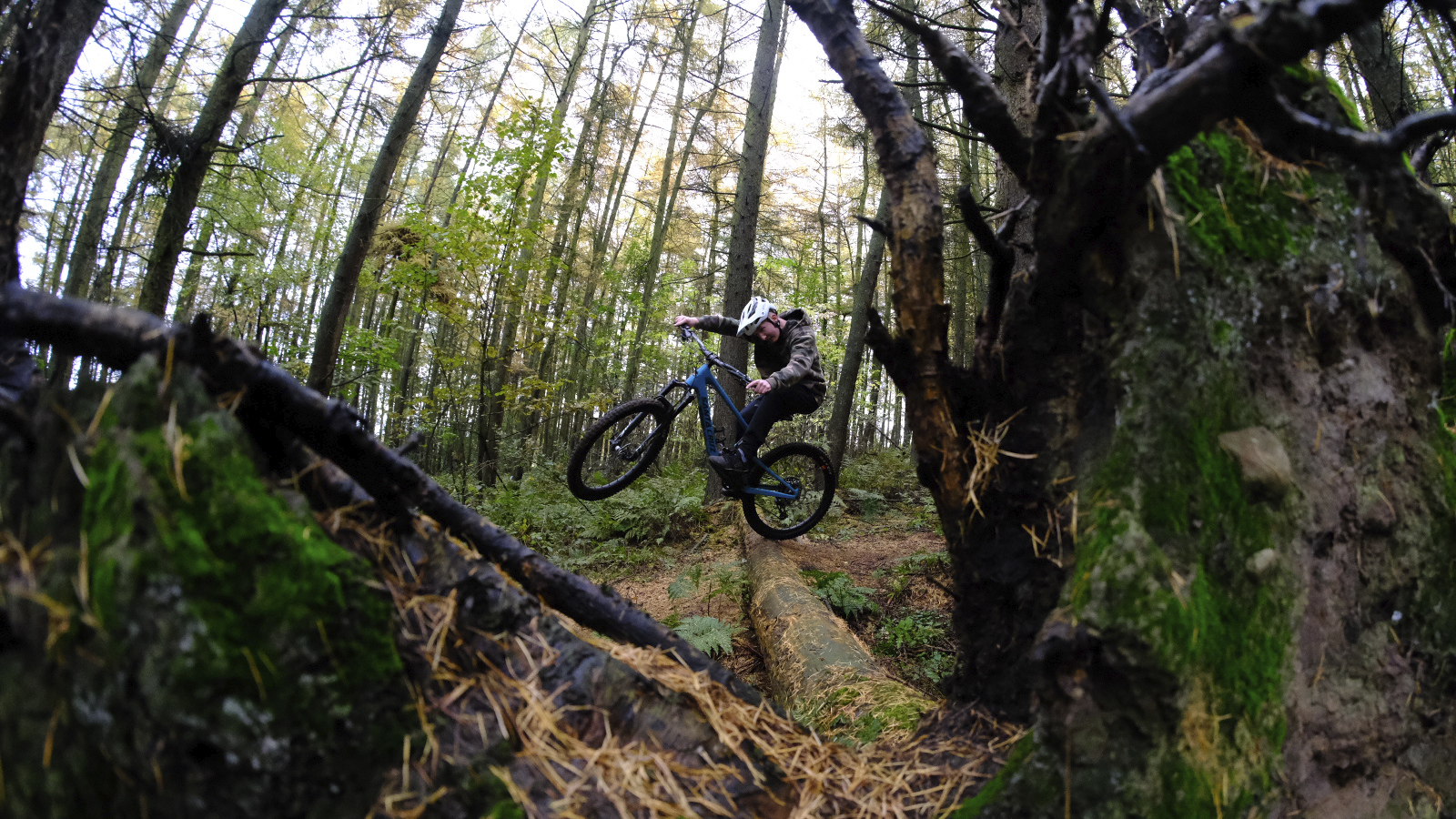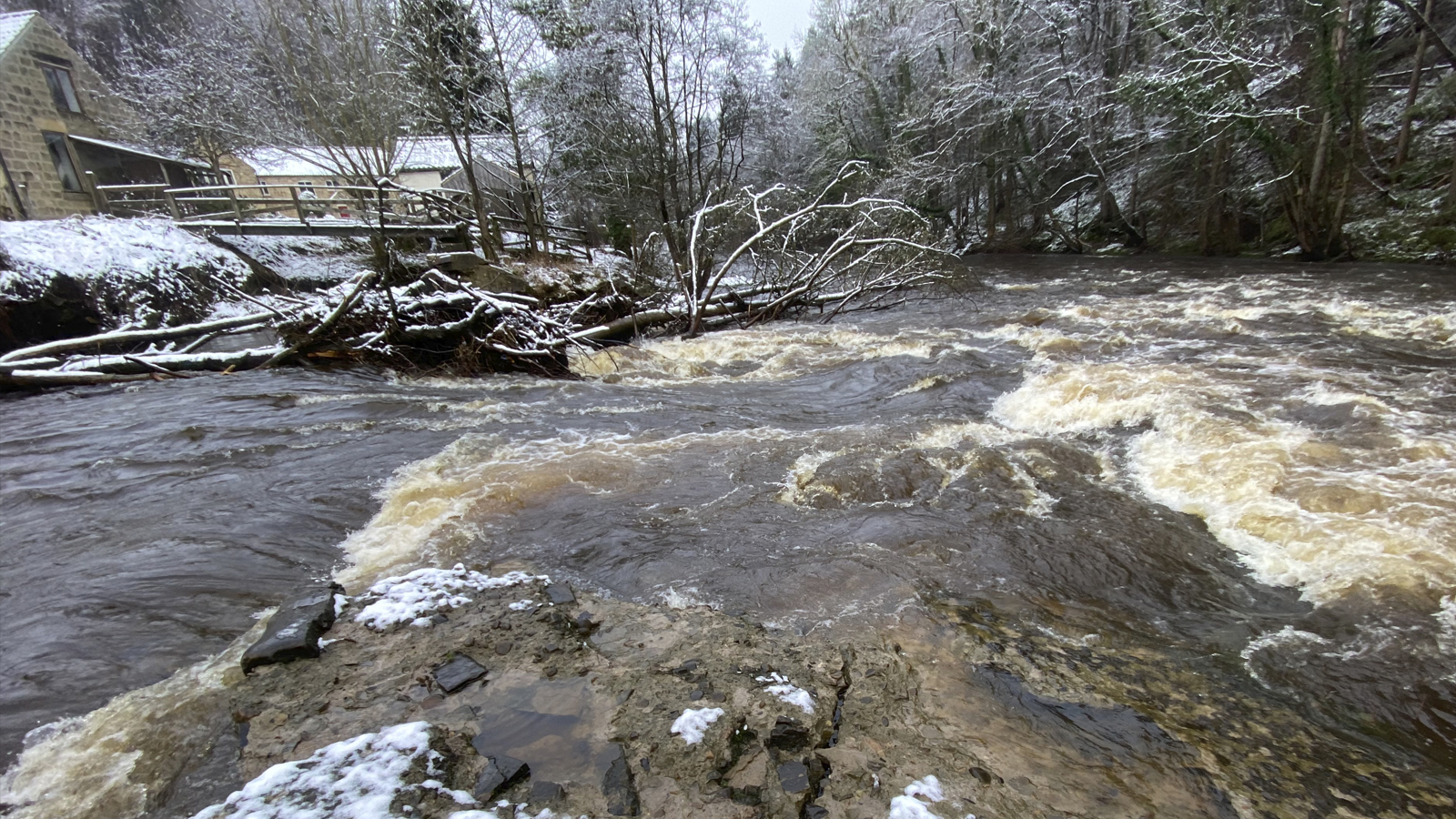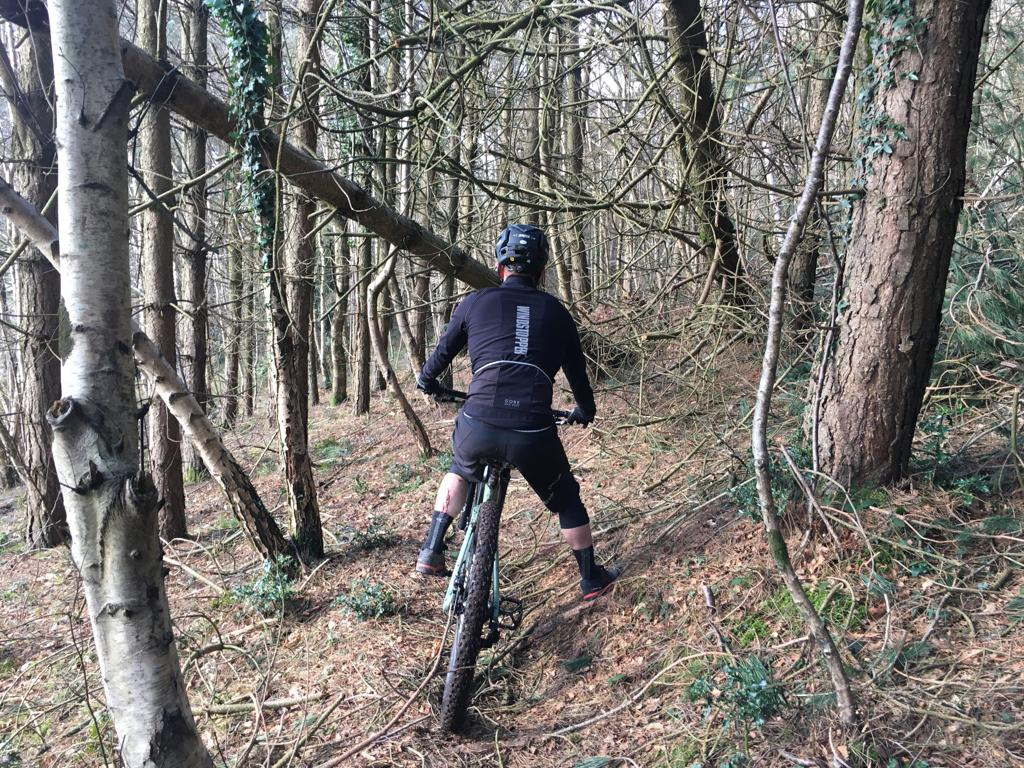Bespoken Word: After the storms
Guy Kesteven takes a first look at the aftermath of the recent rowdy weather that hit the UK, and how we as mountain bikers can be a positive part of the clean up

Flocks of wheelie bins soaring over London. Waves so big they looked Photoshopped bursting over Welsh sea defences. Or Jerry Dyer – the original editor of Dirt Mountain Bike magazine – becoming a viral sensation commentating on planes landing at Heathrow like it was a Downhill Mountain Biking World Champs finish. A succession of savage storms has meant the weather has been pretty hard to ignore lately and left some memorable media moments among the flattened fences and flooded BMWs.
But what about the lasting effects of storms Arwen, Dudley, Eunice and Franklin on the landscape we use – and how we use it going forward?
Obviously, a few days after the latest storms means we’re looking at the wound when it’s pretty raw and, for the most part, our attempts to contact people failed – probably because they’re out in the forests trying to make sense of where to start the clean-up process. What we do from this week onwards could genuinely have lasting consequences, though, so let’s start off on the right foot.
If you go down to the woods today…
First and foremost, while the winds might have died down – for now – and the floods have mostly subsided it is still VERY dangerous out there. For all the trees broken and uprooted there are many more teetering on the edge of a “Timber!” moment. That’s why a lot of trails and trail centers are still closed right now, as forestry teams make assessments of any potential issues. And, while I don’t know a lot about forestry, I do know that if I’m in a forest, there are a ridiculous number of trees that could potentially fall on me as I wind my way along some singletrack. Add in the domino effect of one tree toppling another and you can start adding even more zeroes onto the 1,000s of trees that need to be checked before even a small section of trail can be declared open.
Trees are only part of the equation, too. Safety checks and assessments also need to be done on the access roads and their bridges which are the arteries of making the forests useable. These safety assessments need to take place before forestry crews even think about starting to clear fallen trees and other debris. That’s because having a clearing team hit by an unchecked falling tree and then finding out the nearest fire road is washed out or the bridge is unsafe for an ambulance to use would make an already terrible incident far worse. Don’t even think a bit of plastic-wrapped polystyrene is going to make a lot of difference if anything much larger than a twig drops on your head either.
Hopefully that’s enough to put a clamp on the front rotor of anyone who’s been tempted to lift “trail closed” tape and go and see what it’s really like first hand. We’re not just talking about the massive commercial forests here either. We’re talking about anywhere a tree can hang over your head as you get your biking groove on. Or – as one exceptionally lucky lad who survived his van being totally crushed by a falling tree as he was getting changed in the back of it – even the spot where you park before pedalling.

Wood working
The second thing we need to understand is the timescale woodlands and forests operate on and the resources available to make these repairs and bikers’ place in their list of priorities. While – thankfully – there are certainly a lot more progressive and dynamic people involved in the spreading branches of Forestry Enterprise than a few years ago, the core foresters that form its trunk embrace change about as quickly as an oak grows. While I’d love to argue all day long about how our health – mental and physical – is almost certainly a far more important product of our forests and woods than truck loads of logs, if I was wearing a green FE fleece my view might be very different. Providing recreation facilities is part of their official mandate, but it’s still at best a sideshow and at worst an irritating obstacle to commercial timber production.
As with any governmental organization there’s a whole load of process and paperwork to go through before things can change, too. But even by civil service standards they play a long game and anyone who’s been involved in co-operative trail building will probably tell you that five years in forestry is more like five minutes for the rest of us. Or to put it another way, yes while there are many fantastic teams out there right now working flat-out to try and get trails ready to ride again as soon as possible, we all need to be patient. I’m talking potentially months, not days, before some areas are back to normal. And in some cases we need to accept they might never be.
Just because riding might be your priority, realize that by helping with other problems first you can make a massive difference practically and in terms of perception
The morning after
Okay, so that’s a potentially – but necessarily – bleak summary of the situation right now, so what can we do about it?
One, don’t be a dick. If you’re thinking of going riding somewhere that’s likely to have been damaged find out whether it’s open. There’s no totally comprehensive central point to get that information (and no set way of delivering trail reports so check all possible points of contact – Twitter, Facebook, Websites, Instagram, official forestry trail groups and visitor centers, etc – before you set off. Otherwise you’ll either be disappointed or do something dumb and ride where you shouldn’t.
We need to be even more sensitive to how we’re being perceived than ever now, too. Can you imagine the headache that anyone involved in forestry is waking up with every day right now? They’re staring at the hungover party clear-up from Hell and we’re basically the guests waking up with them. So the choices are that we can just slide quietly out of the door and go somewhere else like the majority of ramblers, dog walkers, etc will. We can make the mess even worse by rooting around looking for our cell phone while complaining that the coffee someone’s made us doesn’t have our favorite brand of oat milk in it and it’s cold. Or we can make a coffee for everyone ourselves and – because we don’t know where everything strewn across the kitchen should go – we can find the recycling bin and start cleaning up the empties.

Be part of the solution
In practical terms, that means getting involved in the local build community as best you can. If you’ve got the time to go and join your local trail volunteers or any official working parties on clean-up days then that’s obviously the most positive contribution.
It’s particularly important right now not least because FE and trail crews have got a real challenge on their hands, but also because it’s potentially a great time to make the changes we want to see. That’s certainly what’s happening up in the Tweed Valley where trail builders saw a lot of their existing trail slate wiped clean by storm Arwen last November. Rather than just trying to rebuild the old stuff, though, they jumped at the opportunity to create a fresh network of better, more sustainable trails and actually improve the riding there.
We know several other areas where that’s happened as well and if you can work alongside the authorities to take a load off their to-do list they’re going to be a lot keener to collaborate going forward. As always don’t be impatient, though; these things can take time but organizations like Developing Mountain Biking In Scotland are showing just what can be achieved across a far wider spectrum than just trail building and access by making the right moves and connections.
Help others to help yourself
Just because riding might be your priority, realize that by helping with other problems first you can make a massive difference practically and in terms of perception. When the planned Ard Rock Enduro in Swaledale got ripped apart by flooding in 2019, the team behind it pitched in with the clean-up of the whole local area and set up fundraising projects to get it back on its feet as soon as possible. So if you’ve been riding near Reeth recently and wondering why you got a warmer welcome than most places in the Dales then now you know.
Whether you’ve got time to wield a mattock or not, communicating any issues you see while you’re out riding safely is a massive help, too. The recreation cycling ranger for our local riding spot works from an office over an hour away in the midst of a massive complex of much bigger forests so he’s unlikely to be able to visit for a while. If I can go out there and alert him to any obvious issues and liaise with our local build crew – Singletraction – then they can start work on resolving it remotely.
If you spot something dangerous then call it out to your riding group and any others you know locally on WhatsApp, Facebook, Insta or whatever, so nobody gets hurt. And while I couldn’t possibly suggest that you do things unofficially if there’s a tree down or a blocked or washed-out trail that’s otherwise in a safe spot (yeah, I know I’m not an expert but sometimes it’s obvious) then call that out on the socials and who knows, it may get cleared up magically….

Not just trees
I was going to include a whole load of other themes on here about how situations like this mean we as a group need to be more responsible. How cutting fall line trails through loam and tree roots can rip a hillside to pieces and make trees a lot more likely to come down when a storm hits. Everything can cause a negative series of events to the soil geology if done incorrectly, how to build a mountain bike jump being another case in point.
Then there are the real issues such as how parking vans on narrow roads or blocking gates might be handy for a killer ride, but can be an actual killer if a fire engine or ambulance can’t get to someone injured or just a local resident who’s had a heart attack. Or how – even if you park off the road – stirring up grass verges into a Somme and leaving energy drink cans like discarded shell casings is a great way to start a war with locals.
However, parking five minutes’ ride away, going to the local pub or shop for snacks and waving and smiling sweetly not swearing and high-fiving each other on the way past the church on a Sunday morning will mean mountain bikers will be a lot more welcome in future and we’re less likely to find logs across trails that are nothing to do with storms.
But that’s a set of themes I’ve already rattled on about before, so while I might dive into them more deeply again in the future, for now let’s concentrate in staying safe and getting involved in the solution however we can – not being part of the problem.

Guy Kesteven has been working on Bike Perfect since its launch in 2019. He started writing and testing for bike mags in 1996. Since then he’s written several million words about several thousand test bikes and a ridiculous amount of riding gear. He’s also penned a handful of bike-related books and he reviews MTBs over on YouTube.
Current rides: Cervelo ZFS-5, Specialized Chisel, custom Nicolai enduro tandem, Landescape/Swallow custom gravel tandem
Height: 180cm
Weight: 69kg
